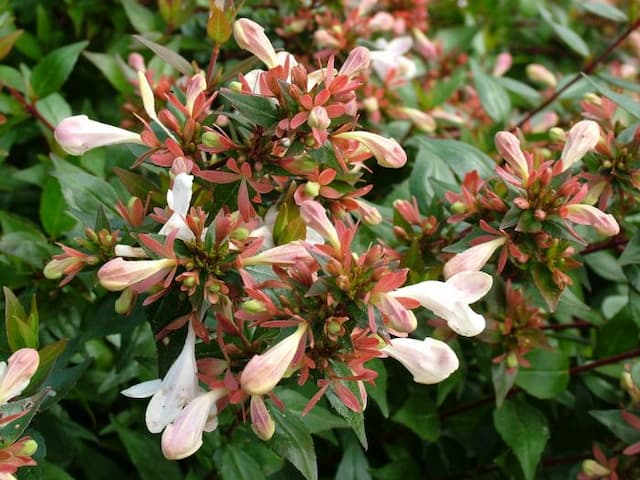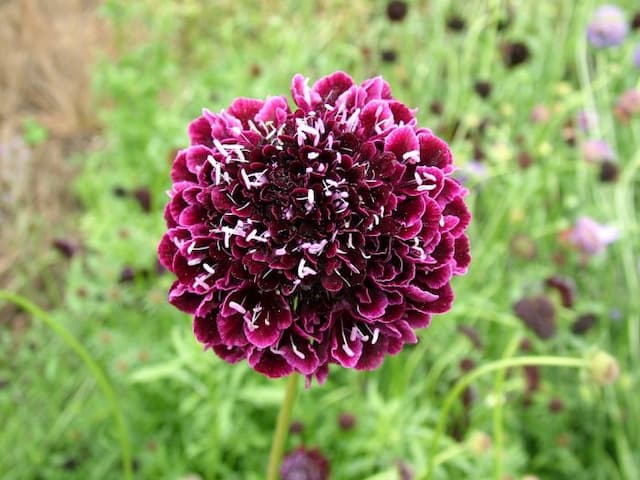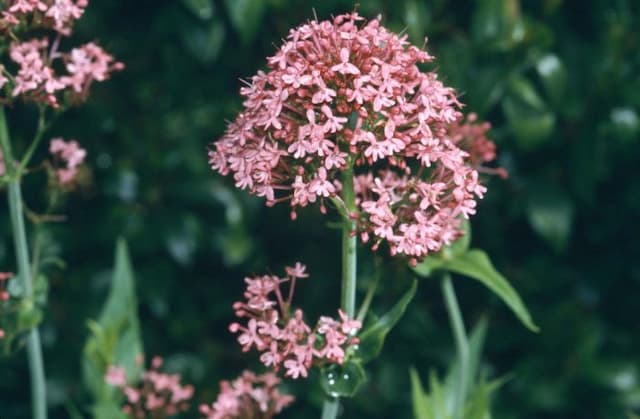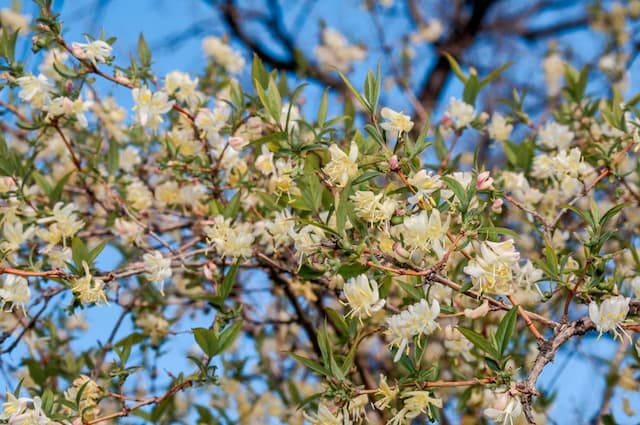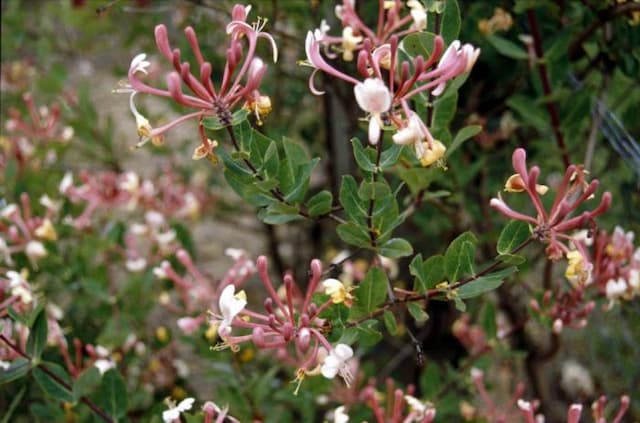String-of-pearls Curio rowleyanus


ABOUT
String-of-Pearls is a trailing succulent with long, slender stems that can reach lengths of up to 2 to 3 feet or more. The stems are adorned with small, spherical bead-like leaves, each about 0.25 inches in diameter, resembling a string of pearls. These cascading strands make for an attractive and unique plant with a distinct appearance.
About this plant
 Names
NamesFamily
Asteraceae
Synonyms
String-of-pearls, String-of-beads
Common names
Senecio rowleyanus, Curio rowleyanus f. marmoratus, Kleinia rowleyana, Senecio rowleyanus
 Toxicity
ToxicityTo humans
String-of-Pearls is considered mildly toxic to humans. While the plant is not highly poisonous, it can cause gastrointestinal discomfort if ingested. Ingesting any part of the plant may lead to symptoms like nausea, vomiting, and diarrhea. Therefore, it is advisable to keep String-of-Pearls out of the reach of children and pets and to exercise caution when handling the plant.
To pets
String-of-Pearls is also mildly toxic to pets, including dogs and cats. If animals ingest the plant, it can lead to symptoms like drooling, vomiting, diarrhea, and, in rare cases, mild lethargy. It's essential to be cautious and keep this plant away from pets to prevent any potential health issues. If you suspect your pet has ingested String-of-Pearls, consult with a veterinarian for guidance.
 Characteristics
CharacteristicsLife cycle
Perennials
Foliage type
Evergreen
Color of leaves
Green
Flower color
White
Height
Up to 3 feet
Spread
Up to 3 feet
Plant type
Succulents
Hardiness zones
8
Native area
Southwest Africa
Benefits
 General Benefits
General BenefitsOrnamental Value: String-of-Pearls is prized for its distinctive appearance, with cascading bead-like leaves, making it a visually appealing addition to indoor spaces.
Low Maintenance: It is relatively easy to care for and requires minimal attention, making it suitable for busy individuals or those new to gardening.
Stress Reduction: Caring for plants, including String-of-Pearls, can have a calming and stress-reducing effect, promoting a sense of well-being.
Decorative Versatility: Its trailing growth habit makes it ideal for hanging baskets, shelves, and terrariums, allowing for creative interior decor options.
Conversational Piece: Its unique appearance often becomes a conversation starter and a point of interest for guests and visitors.
Indoor Gardening: String-of-Pearls allows individuals to enjoy gardening and greenery indoors, even in small spaces or apartments.
Mood Enhancer: The presence of indoor plants, such as String-of-Pearls, can contribute to a positive atmosphere, fostering a sense of comfort and happiness.
Aesthetic Beauty: Its lush greenery and interesting texture add a touch of natural beauty to living spaces, enhancing the overall ambiance. Medical Properties
Medical PropertiesString-of-Pearls is primarily grown as an ornamental plant and is not widely recognized for specific medical properties
 Air-purifying Qualities
Air-purifying QualitiesString-of-Pearls is not typically recognized as a strong air-purifying plant like some other houseplants
 Other Uses
Other UsesCrafts: Craft enthusiasts use cuttings or individual beads in artistic and DIY projects, such as wreaths, terrariums, and succulent-themed crafts.
Table Centerpiece: String-of-Pearls can be used to create unique table centerpieces or living decor for events and parties.
Living Wall Art: Incorporate String-of-Pearls in living wall art or vertical gardens to add a touch of greenery to your space.
Gift Wrapping: Small cuttings or beads can be used as decorative elements for gift wrapping or as part of a botanical gift.
Indoor Bonsai: Skilled gardeners can train String-of-Pearls to create a bonsai-style arrangement, adding a touch of elegance to their collection.
Interesting Facts
 Feng Shui
Feng ShuiIn Feng Shui, indoor plants are often used to enhance the flow of positive energy (chi) in a space. String-of-Pearls can be incorporated into your home or office to promote the following Feng Shui principles:
Prosperity: Place String-of-Pearls in the Wealth and Abundance area (southeast) of your space to attract prosperity and financial well-being.
Harmony: The gentle, cascading growth of String-of-Pearls can create a sense of harmony and balance. It can be used in any area of your home to enhance the flow of chi.
Health and Well-being: The lush greenery of String-of-Pearls can be placed in the Health and Family area (east) to promote good health and family unity.
Creativity: In the Creativity and Children area (west), String-of-Pearls can inspire creativity and foster a playful atmosphere.
Career: Displaying String-of-Pearls in the Career area (north) can help enhance your professional life and bring opportunities for growth.
Relationships: Use String-of-Pearls in the Love and Marriage area (southwest) to improve your love life and strengthen existing relationships. Zodiac Sign Compitability
Zodiac Sign CompitabilityIn astrology, plants are not typically associated with specific zodiac signs
 Plant Symbolism
Plant SymbolismString-of-Pearls is often associated with the following symbolic meanings:
Elegance: Its unique trailing and cascading growth pattern is often seen as an embodiment of natural elegance and grace.
Nostalgia: The delicate, bead-like leaves may evoke a sense of nostalgia or memories, making it a symbol of cherished moments from the past.
Caring and Sharing: String-of-Pearls can symbolize a sense of nurturing and sharing, as it produces "pearls" that can be propagated and shared with others.
Connection: The interconnected pearls on the plant can symbolize the interconnectedness of all living things and the beauty of unity.
 Water
WaterString-of-Pearls has specific watering requirements due to its succulent nature. Here's how to water it:
Let Soil Dry: Water thoroughly but allow the soil to dry out partially between watering. Stick your finger into the soil about an inch deep to check for moisture. Water only when the top inch or so is dry to the touch.
Avoid Overwatering: Overwatering can lead to root rot. Ensure the pot has drainage holes, and always empty the saucer under the pot after watering to prevent waterlogged roots.
Watering Frequency: The frequency of watering can vary depending on factors like the season, indoor humidity, and pot size. On average, you may need to water every 2-4 weeks.
Central Tank: You can also water String-of-Pearls by adding a small amount of water to the central tank of the plant (the spherical leaves). However, this should not replace thorough soil watering and should be done sparingly. Light
LightString-of-Pearls prefers bright, indirect light. Here are some guidelines for its light requirements:
Indoors: Place your String-of-Pearls near a window with filtered sunlight. They thrive in bright, indirect light. East or west-facing windows are often suitable.
Outdoors: If grown outdoors, provide it with dappled or indirect sunlight, as too much direct sun can scorch the leaves. Temperature
TemperatureString-of-Pearls is a tropical succulent and prefers specific temperature conditions:
Temperature Range: Keep your plant in a range of 70°F to 80°F (21°C to 27°C) during the daytime.
Cool Nights: It can tolerate slightly cooler temperatures at night, down to around 50°F (10°C) or slightly lower, as long as it's not for prolonged periods.
Protection from Frost: String-of-Pearls cannot withstand frost or freezing temperatures. If grown outdoors in temperate regions, bring it indoors or provide protection during cold weather. Pruning
PruningPruning String-of-Pearls is typically done to maintain the plant's shape, remove dead or damaged parts, or to encourage bushier growth. Here's how to prune it: Trimming: Use clean, sharp scissors or pruning shears to trim away any leggy, damaged, or discolored stems or beads. You can also cut back stems to the desired length to encourage a fuller appearance. Propagation: If you want to propagate your String-of-Pearls, you can cut healthy stems into sections with a few beads and plant them in fresh soil to grow new plants. Caution: Be careful not to over-prune, as String-of-Pearls can be sensitive to extensive trimming. It's generally best to prune lightly and avoid cutting into the core of the plant.
 Cleaning
CleaningAs needed
 Soil
SoilString-of-Pearls requires a well-draining soil mix that mimics its native, arid habitat. Here's the ideal soil mix and pH:
Soil Mix: Use a cactus or succulent potting mix or create your own mix by combining potting soil, perlite, and coarse sand. A mix that provides excellent drainage is essential to prevent overwatering and root rot.
Soil pH: String-of-Pearls prefers a slightly acidic to neutral pH range, ideally between 6.0 and 7.0. Repotting
RepottingString-of-Pearls generally doesn't require frequent repotting. Repot when:
Root Bound: If the plant has outgrown its current container and the roots are tightly packed, it's time to repot into a slightly larger pot.
Soil Depletion: When the potting mix has broken down, lost its ability to drain well, or become compacted, it's a good time to repot.
Health Issues: If your String-of-Pearls is suffering from root rot or other issues, repotting may be necessary to trim unhealthy roots and refresh the soil.
In general, you may need to repot every 2-3 years, or as needed based on the factors mentioned above. Choose a pot that is just slightly larger than the current one to avoid overpotting, which can lead to overwatering and root problems. Humidity & Misting
Humidity & MistingString-of-Pearls is adapted to dry and arid conditions and doesn't require high humidity levels. It can thrive in average indoor humidity levels, typically between 40% and 60%. However, it's essential to maintain good air circulation around the plant to prevent excess humidity or moisture buildup, which can lead to rot issues. String-of-Pearls' succulent leaves are designed to retain moisture, so it's more tolerant of lower humidity compared to many other plants.
 Suitable locations
Suitable locationsIndoor
Provide bright, indirect light, well-draining soil, and water moderately. Maintain indoor humidity
Outdoor
Choose a shaded to partly sunny spot, use well-draining soil, and water sparingly, protecting from frost
Hardiness zone
10-11 USDA
 Life cycle
Life cyclePlanting:
String-of-Pearls is typically planted or potted during the spring months. This is when many gardeners start new plants from cuttings or plant offsets in suitable containers with well-draining soil.
Growth:
During this stage, the plant develops and grows. String-of-Pearls can take several years to reach maturity and develop its characteristic trailing stems and bead-like leaves.
Vegetative Stage:
In the vegetative stage, the plant focuses on growing its bead-like leaves and creating a dense trailing appearance. The duration varies based on growing conditions.
Flowering:
String-of-Pearls may produce small, white, star-shaped flowers at the end of its trailing stems, typically in late winter to early spring. However, not all plants will flower every year, and flowering can be sporadic. Propogation
PropogationPropogation time
Spring - summer
String-of-Pearl can be propagated through stem cuttings. The best time for propagation is during the active growing season, typically in the spring or early summer. Here's how to propagate String-of-Pearls:
Select Healthy Cuttings: Choose healthy stems with several bead-like leaves, ideally with a length of about 3-4 inches.
Let Cuttings Callus: Allow the cut ends of the stems to air dry and callus for a day or two. This step helps prevent rot when planting.
Plant Cuttings: Plant the dried cuttings in well-draining soil or a succulent mix, burying them just deep enough to anchor them securely.
Water Sparingly: Water the cuttings lightly, and then let the soil dry out partially before the next watering. Be cautious not to overwater.
Provide Indirect Light: Place the new cuttings in bright, indirect light but shield them from direct sun exposure to prevent sunburn.
Root Development: Over time, the cuttings will develop roots and establish themselves as new plants.
 Pests
PestsSpider mite, Scale insects, Mealybug, Aphid, Slugs and snails
 Diseases
DiseasesRoot Rot, Powdery mildew, Rust

